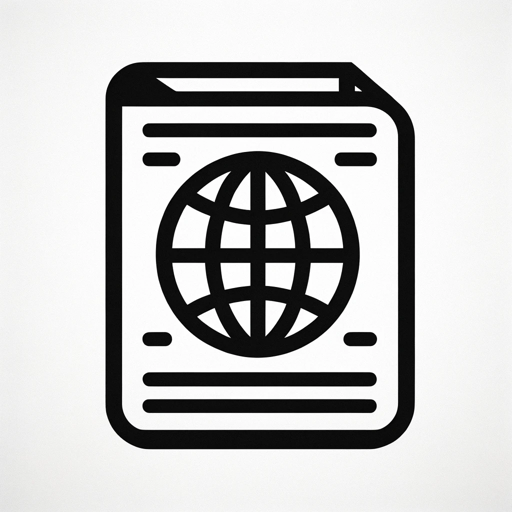Fake News!-AI-driven fake news detection
AI-Powered Truth Verification Tool
Evaluate this news content for bias.
Check the authenticity of this image.
Is Diet Coke linked to cancer?
Is Chinese medicine legit?
Related Tools
Load More
Angy Fact Check at Fake News
Fact check by proving a rebuttal. [1]. If you get stuck until section L, ask to 'continue'. [2]. Output in English for better reasoning. [3]. In each section labeled 'G', 'J' and 'L', performing an Internet search is a standard procedure.

News
I provide daily global and European news, with a focus on the Netherlands, Poland, and science.

MisinformationBot
Proud purveyor of fake news, conspiracy theories, and hazardous health tips. For entertainment use only. Click a starter question below to get things rolling.

Fact or Fiction fact checker
Provides verification with live links.

Positive News Messenger
I find and share the latest positive news.

TOP NEWS
Get real-time global headlines and hot events
20.0 / 5 (200 votes)
Introduction to Fake News!
Fake News! is a specialized truth-seeking tool designed to meticulously analyze the authenticity of news articles, statements, and media content. Its primary function is to help users distinguish between factual reporting and misinformation by examining the reliability of news sources, the qualifications and background of authors, logical consistency, and potential biases. The tool is particularly useful in today's media landscape, where misinformation can easily spread, causing confusion and distorting public perception. For instance, if a news article claims that a certain political figure made a controversial statement, Fake News! would guide the user through steps such as verifying the source's credibility, cross-referencing the statement across multiple trustworthy outlets, and checking for logical fallacies within the article. This ensures that the user can confidently determine the truthfulness of the information.

Main Functions of Fake News!
Source Reliability Assessment
Example
When a user encounters a news article from an unfamiliar website, Fake News! assesses the website's history, ownership, editorial practices, and reputation in the industry.
Scenario
A user reads an article on a little-known blog claiming a groundbreaking medical discovery. Fake News! would analyze the blog's past content, checking for patterns of misinformation or bias, and cross-reference the discovery with reputable scientific sources to assess its credibility.
Author Background Analysis
Example
Fake News! examines the qualifications, professional history, and potential biases of the article's author to help determine the reliability of the information presented.
Scenario
A political op-ed raises concerns about a policy issue. Fake News! checks the author's background, revealing whether they are a seasoned journalist with expertise in the topic or a commentator with a history of partisan bias.
Fact Verification and Cross-referencing
Example
Fake News! guides users through verifying facts reported in news stories by cross-referencing them with multiple credible sources.
Scenario
An article claims that a new study has proven the effectiveness of a controversial diet. Fake News! directs the user to check the study's publication in scientific journals and to compare coverage from various health news outlets, ensuring a balanced understanding.
Ideal Users of Fake News!
Journalists and Editors
These professionals would benefit from using Fake News! to ensure the accuracy and reliability of their reporting. By vetting sources and verifying facts, they can maintain high standards of journalism and avoid the pitfalls of spreading misinformation.
Educators and Researchers
Teachers, students, and academic researchers can use Fake News! to critically assess sources and data used in their work. The tool helps them develop critical thinking skills and ensures that their work is based on verified and trustworthy information.

Guidelines for Using Fake News!
1
Visit aichatonline.org for a free trial without login, also no need for ChatGPT Plus. Begin by exploring the tool to familiarize yourself with its features.
2
Prepare the content you want to verify—whether it's an article, statement, image, or video. Ensure that you have the relevant sources or materials on hand.
3
Use the tool to analyze the reliability of news sources and verify the credentials of authors. Start by inputting the source or author name into the search function.
4
Cross-reference information across multiple sources and check for logical consistency in the arguments presented. Utilize the fact-checking features to uncover any potential biases or inaccuracies.
5
Review the results, and use the provided strategies to authenticate any media or images. Use these insights to make an informed decision about the credibility of the information.
Try other advanced and practical GPTs
Real Estate Assistant by Jude AI
AI-driven real estate insights and solutions.

SecurityRecipesGPT
AI-powered guidance for smarter security.
Bug Bounty Assistant
AI-Powered Bug Bounty and Web Security Tool

A luxury interior designer
AI-driven luxury redesigns for any space

岗位职责生成器
AI-driven job responsibilities generator.

Psychobot - Psychological Assessment Helper
AI-powered tool for mental health diagnosis
Grammer Guardian
AI-driven clarity for your writing.

渣男
Sweet words, no commitments.

Mike Rhodes | A Quest to Learn GAds Scripts 📝
Master Google Ads automation with AI-driven coding challenges.
The Exponentialist
AI-powered insights for exponential growth

Nadia, my girlfriend🌹💕
AI-Powered Emotional Companion

EtsyGPT
Boost your Etsy shop with AI

- Academic Writing
- Fact-Checking
- Bias Detection
- News Verification
- Media Authentication
Common Questions About Fake News!
What makes Fake News! different from other fact-checking tools?
Fake News! offers a comprehensive approach by not only verifying the content but also analyzing the reliability of the sources and authors. It goes beyond basic fact-checking by offering cross-referencing tools and bias detection, which helps users make informed decisions.
Can Fake News! be used for verifying academic sources?
Yes, Fake News! is particularly useful for academic purposes. It can verify the credibility of sources, ensuring that research papers and essays are backed by reliable information. It also helps in detecting biases, which is crucial in academic writing.
How does Fake News! handle multimedia content like images and videos?
Fake News! includes tools for authenticating images and videos. By analyzing metadata, checking for manipulations, and cross-referencing with known databases, the tool helps determine whether multimedia content is genuine or doctored.
Is Fake News! useful for everyday news consumers?
Absolutely. Whether you're reading news online, browsing social media, or receiving forwarded messages, Fake News! helps verify the accuracy of the information, ensuring you're not misled by false or biased content.
Does Fake News! require any technical skills to use?
No, Fake News! is designed to be user-friendly. The interface is intuitive, and the tool provides clear instructions at every step, making it accessible to users of all technical backgrounds.